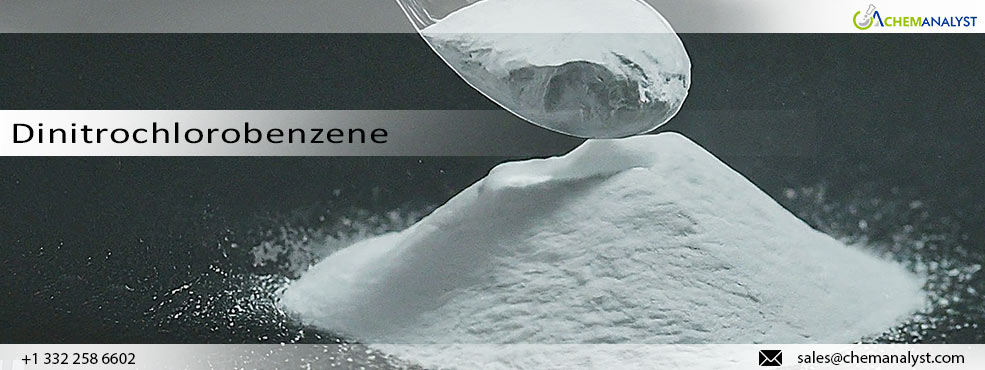Dinitrochlorobenzene Prices Plummet in May Amid Surplus and Buyer Hesitancy
- 10-Jun-2024 12:45 PM
- Journalist: Jacob Kutchner
The global prices of Dinitrochlorobenzene experienced a significant drop during May, contrasting with the upward trend seen in the previous month. This decline was primarily due to end users having plentiful stock, reducing the necessity for new purchases. Consequently, the cautious approach of buyers resulted in fewer market transactions, which collectively pushed down the prices of Dinitrochlorobenzene.
India’s factory activities decelerated in May 2024, though they remained in expansion mode. Notably, the month of May saw the highest level of positive sentiment among manufacturing firms in nearly a decade, indicating sufficient inventories among market participants. However, the growth in new orders and export orders softened compared to the previous month, contributing to the decline in Dinitrochlorobenzene prices. As a major exporter of Dinitrochlorobenzene, India’s trends were mirrored in other international markets, such as Europe.
The Eurozone economy grew more rapidly than anticipated as it emerged from recession, yet its growth remains modest compared to the strong performance of the US economy. The European Central Bank is expected to begin lowering eurozone interest rates from their historic highs this week. However, ongoing inflation suggests that this will not trigger a swift series of rate cuts. Preliminary data from Eurostat indicate that consumer prices in the eurozone rose by 2.6% year-on-year in May, up from 2.4% in April and surpassing the 2.5% forecast. This is the first increase in the annual inflation rate since December 2023. In Germany, consumer prices climbed by 2.8%, in France by 2.7%, in Italy by 0.8%, and in Spain by 3.8%. This persistent inflation continues to weigh on consumer sentiment, contributing to the decline in Dinitrochlorobenzene prices. Additionally, the appreciation of the euro against the USD in May significantly influenced market pricing trends. This currency appreciation effectively reduced the import costs of Dinitrochlorobenzene, further driving the downward trend in prices.
Concurrently, the US economy experienced a deceleration in the first quarter, marked by a tapering growth trajectory and an unforeseen uptick in inflation. Recent figures reveal a decline in US consumer sentiment to a six-month low in early May, propelled by rising short-term inflation anticipations. This sentiment shifts also played a role in the reduction of Dinitrochlorobenzene prices. During its May 2024 Federal Open Market Committee (FOMC) gathering, the Federal Reserve opted to keep the overnight federal funds rate steady within the existing range of 5.25% to 5.5%.
ChemAnalyst's analysis indicates a potential upswing in Dinitrochlorobenzene prices over the next few months, driven largely by increased buying activity from end-consumers. Central banks in Western regions could consider lowering interest rates, potentially easing financial burdens on consumers and supporting the upward movement of Dinitrochlorobenzene prices. Furthermore, heightened trading activity could provide additional momentum to the Dinitrochlorobenzene market.



